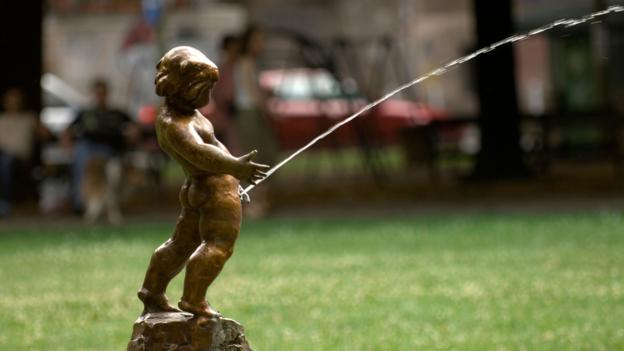The story is that the fish swims up a stream of urine into a man’s penis, then eats it from the inside. But is there any truth to it?
By Josh Gabbatiss, BBC
Of all the denizens of the Amazon basin, there is none more feared than the tiny fish known as the candiru. Since coming to the attention of science in the early 19th century, this creature has occupied the very darkest recesses of the popular imagination.

The reason for this is the candiru’s supposed habit of entering the human penis, lodging itself in place with sharp barbs, and feasting on it from the inside – a horror story that is enough to keep your legs firmly crossed for days.
This tale has been told everywhere: from documentaries on the BBC and Animal Planet to Grey’s Anatomy; from William S. Burroughs’ Naked Lunch to Chuck Palahniuk’s Fight Club; and invariably it serves as shorthand for the worst thing that could possibly happen to a human being. Internet forums abound with references to the fish, as well as grisly embellishments concerning its activities – laying eggs in bladders and suchlike.
So far, so disgusting. But it is not at all clear that any of this is true.
So begins a paper published in 1930 in the American Journal of Surgery by Eugene Willis Gudger. While this piece stands as a veritable candiru Bible, collecting and analysing accounts from as early as 1829, it mostly deals with speculation, hysteria and urban legend.

The first challenge is identifying the fish. The Amazon is home to countless species of catfish, and several tiny, virtually transparent species have been labelled as candirus over the years. The one that is generally thought to be the culprit is the 5cm-long Vandellia cirrhosa. It is known to parasitise the gills of larger fish, feeding on their blood and generally making their lives a misery.
Despite their vampire-like feeding habits, these parasites are insignificant in the vast, muddy depths of the Amazon. Were it not for their fame as man-eaters, they would undoubtedly have sunk into obscurity in some Brazilian taxonomist’s bottom drawer.
However, this is exactly the point where the story begins to veer into the realms of speculation.
A typical early account describes the candiru as “very small, but uniquely occupied in doing evil”. Such melodrama is common in 19th-century writings on the fish, when a handful of European explorers came across people in the Amazon who regaled them with stories of this real-life river monster.
In their tales, local communities lived in fear of a fish that in a moment could inflict upon them the most excruciating pain conceivable. These creatures, it was claimed, were even more feared than the ferocious schools of piranha that also inhabited these waters.
The German botanist Carl Friedrich Philipp von Martius was the first European to document candirus in the Amazon. He described how local men tied their urethras shut when spending time around the water.
George Albert Boulenger, Curator of Fishes at the British Museum, outlined an intricate device assembled from coconut shells and palm fronds. Even more elaborate is a description of a convoluted system of bath houses that had apparently sprung up in the depths of the Amazon, allowing natives to draw water from the river without ever having to immerse themselves in it.
The authors mostly focus on the vulnerability of penises to attack, perhaps because they themselves are all men. But many emphasise that the fish do not discriminate, and will happily enter a convenient vagina or anus.
It gets worse. Some writers claim that candirus can leap from the water and vigorously ascend streams of urine to reach their target. There are also stories of candirus biting holes in the flesh of passers-by in order to enter and feed on their blood.
Perhaps most horrifying of all are the remedies offered for a candiru in the privates. While some sources optimistically recommend a hot bath, or herbs capable of dissolving the fish, the verdict is virtually unanimous: the best way to get rid of the parasite is to remove the offending member altogether.
“The only means of preventing it from reaching the bladder, where it causes inflammation and ultimately death, is to instantly amputate the penis,” declared Boulenger, describing a trip taken by one of his colleagues. “At Tres Unidos, Dr Bach had actually examined a man and three boys with amputated penes [sic] as a result of this dreadful accident.”
The thing is, despite all the graphic depictions of genital mutilation, not one of these men ever witnessed a candiru attack. There are dozens of reports from the 19th and early 20th centuries of candiru behaviour, and every one relies exclusively on hearsay.
As WR Allen, a renowned Amazonian ichthyologist, put it: “I was told of numerous cases of the candirus entering the urethra, but they were always some distance downstream, and when I arrived downstream I was told of many such cases upstream”.
So has the candiru been miscast as a penis-chomping villain?
What ultimately emerges from this fishy tale is a message of science triumphing over superstition. While scientists have long since consigned unicorns and dragons to the story books, there are still stories of strange animals that have never been properly investigated. Some of them, like the candiru, may well turn out not to be true.
It is important never to underestimate the power of the natural world to amaze, but it is equally important to carry on questioning everything, and not to let horror stories scare us away from the water. (The above is a shortened version of a BBC feature published today)























